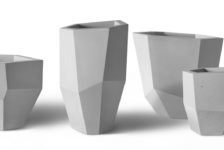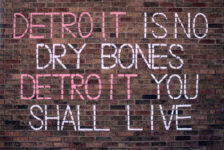Article by Farah Afza Jurekh We explore 10 awesome YouTube tutorials to master hand drawing. Hand drawings are simply the visual translation of the thoughts of our creative minds. In architecture, hand drawing is one of the most powerful and essential tools. The sketches and drawings of architects should be able to speak, obviously metaphorically; it means that they should be able to communicate with our clients. It must be a medium to express and convey our thoughts and ideas. Now, if you are a beginner, I will suggest that you read this wonderful article; The Complete Beginners Guide to Improving Your Hand Drawing by my colleague Carlos Cortés. For those who have already read this helpful article, assuming that you are now a pro in hand drawing, you need to give your masterpiece life which means I am talking about rendering. Renderings add lives to sketches. It is true that digital renderings are comparatively easier and less time-consuming, but the impression that hand renderings can make surpasses everything. In this article we will explore 10 YouTube tutorials to improve your skills in hand renderings. 1. Rendering by Adding People and Trees WATCH >>> Drawing in progress: How I sketch people
Suppose you have drawn a building. The form, the spatial quality, and everything may be nice. But, you will still feel an emptiness, the absence of something in your sketch. Now, try adding a few trees, bushes, a few people or the surrounding environment and see the magic! These few things will surely accentuate the liveliness of your sketches. This is because when we see drawings, we automatically try to relate that to our real world. And in reality, a building does not stand alone on a white canvas. In reality, it is surrounded by nature and its users. Thus, by adding trees, people, and the related surrounding elements, you can easily bring life to your sketches. Rendering with Different Media Rendering can be done with different media. The best part is that we get to choose whatever media we like and are comfortable with. So, it is actually fun to do. The commonly used media are pencils, pens, markers, water colors, oil colors and so on. 2. Basics for Ink Pens and Markers WATCH >>> Ink Pen Comparison for Sketching, Drawing, and Copic Marker Rendering
Before starting to render with pens and markers, we need to know what different types of pens and markers are available. The line weight of each pen varies significantly and so does its use. Hence, this tutorial is important to pick up the right pens to meet your style. 3. Rendering With Ink WATCH >>> Architectural Sketching – Day 06
A common drafting pen does wonders. This tutorial is very helpful for those trying to improve your skills with pen. With a few simple line strokes, the rendering is done over here. The tonal variation gives depth, adding a 3d effect to a sketch. All you need to know is how to hold the pen in the correct position, how to make your strokes bold. Remember, the strokes are very important in drawings! Strokes can easily differentiate an amateur from a pro. The bolder the strokes are, the more vivid and communicative the drawing will be. 4. Ink Texturing WATCH >>> Ink texturing – Architecture Daily Sketches
Well, rendering can be done by adding textures to your sketches. This is basically performing the hatch command of AutoCAD by hand. Of course it will be time consuming, but you need to be patient because it’s worth trying! All you need to do is to know about different types of textures for different materials. This type of rendering will be very informative, giving clear details of materiality in your design. And this can be a great technique especially for interior designers. 5. Rendering with Watercolorand Markers WATCH >>> 2 story building – Architectural sketching and rendering If you want to render your sketches with watercolors or markers, this video can really be very helpful. Watercolor is fun to do and the artistic look it gives to sketches is simply mind-blowing. But, I must say, to do these water color washes like a pro, takes a lot of practice. With markers, shadows can easily be defined which brings depth to sketches. Adding shadows will also make sketches more realistic. Markers are easy to use. You can easily turn your sketch into a colorful masterpiece. 6. Rendering with Ink and Watercolor WATCH >>> Pen, Ink speed demo by Joe Cartwright
7. Landscape Coloring Techniques WATCH >>> ASMR Landscape Coloring Techniques
Another awesome tutorial showing coloring techniques with markers. It is important to emphasize o the strokes while working with markers. To learn about it watch landscape coloring techniques 8. Rendering with Caligraphy pen or Waterbrush WATCH >>> watercolor architectural presentation
This is another type of media. The technique is intriguing. Calligraphy brushes create awesome watercolor effects. A light water wash can bring dramatic changes to your sketch! 9. Pencil Rendering WATCH >>> Architecture rough sketch drawing
If you are in love with black and white, pencils can do magic. Just like pens, variations in tones with pencils are great techniques with which to render your drawings. The sketchy effect that pencil rendering produces gives a casual look to your work which is artistic and at the same time very appealing. The technique of holding the pencils plays an important role in mastering your skills. 10. Combo of different media WATCH >>> Expresión Arquitectónica – Arq. Eloy Vera Lahaye
Well, this tutorial is a great example of how the use of different media like color pencils, color markers, and pen, along with the additions of people, trees and other natural settings can transform a simple drawing into a vibrant one. Well, I hope, following the tutorials, you will get to learn the techniques of hand rendering and will soon be a pro. Do comment in our comment section. We will love to hear about how you have improved your rendering skills!
Recommended Reading:
- Becoming an Urban Planner: A Guide to Careers in Planning and Urban Design by Michael Bayer
- Sustainable Urbanism: Urban Design With Nature by Douglas Farrs
Article by Farah Afza Jurekh
Published in Blog







![Assuming Beauty [Video]](https://land8.com/wp-content/uploads/2019/05/walker-macy-lara-rose-land8x8-224x150.png)


